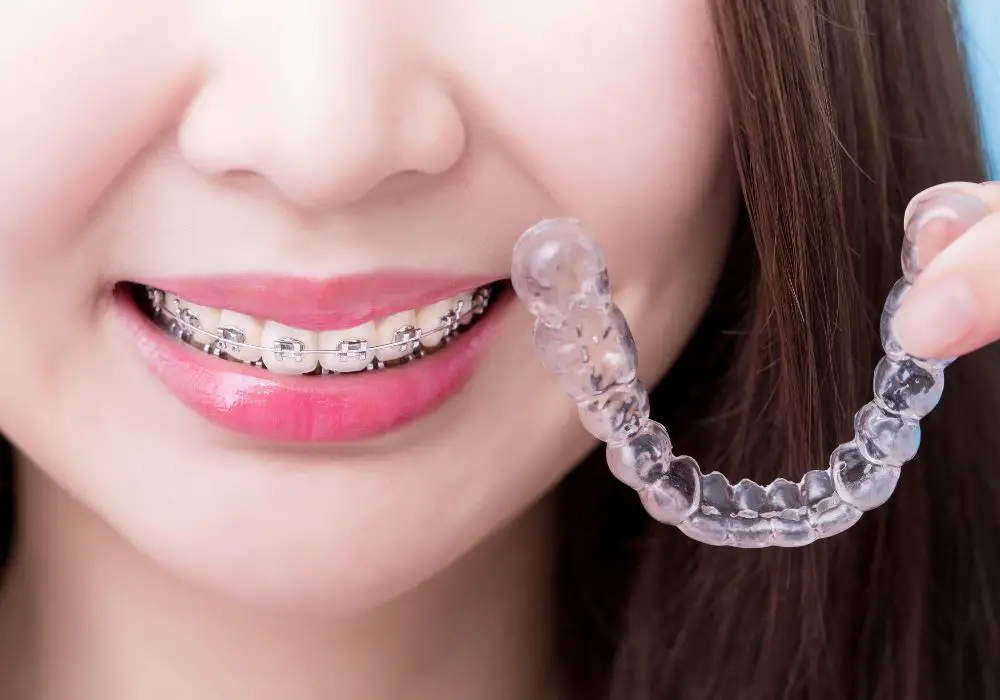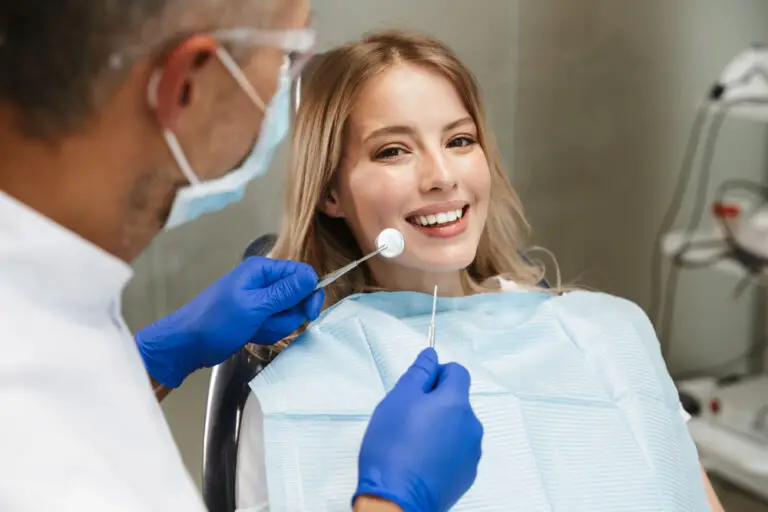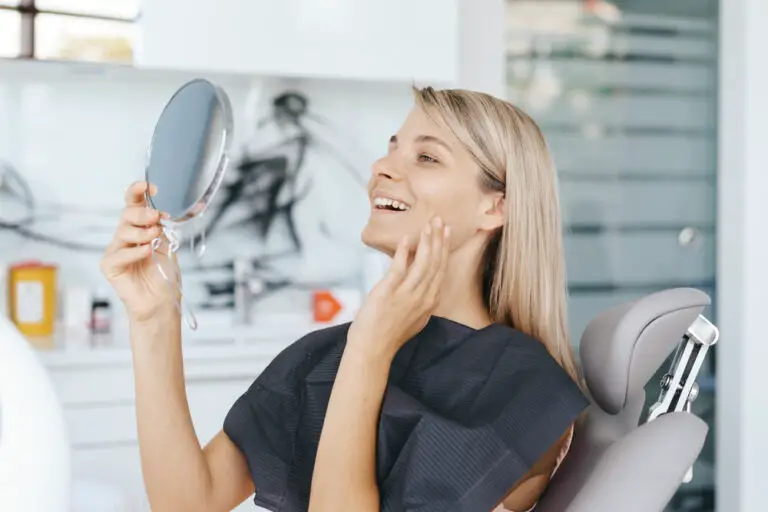If you’re wondering whether you can get braces even if your teeth are straight, the answer is yes! While braces are often associated with correcting crooked teeth, they can also be used to address other dental issues such as bite problems, crowded teeth, and gaps between teeth. In fact, many people who have straight teeth still get braces to improve their overall dental health and appearance.
One reason you may want to consider braces even if your teeth are straight is to correct a misaligned bite. A misaligned bite can lead to problems such as jaw pain, headaches, and difficulty chewing. By using braces to adjust the position of your teeth, your bite can be corrected, improving your overall dental health and comfort.
Another reason to consider braces is to address crowded teeth or gaps between teeth. Even if your teeth are straight, they may not be evenly spaced or properly aligned, which can impact your smile and overall dental health. By using braces to adjust the position of your teeth, you can achieve a more even and aesthetically pleasing smile while also improving your dental health.
Understanding Braces

If you’re considering getting braces, it’s important to understand what they are and how they work. In this section, we’ll cover the purpose of braces and the different types available.
Purpose of Braces
The main purpose of braces is to correct misaligned teeth and jaws. This can improve your oral health, as straight teeth are easier to clean and less likely to develop cavities or gum disease. In addition, properly aligned jaws can help improve your bite, reduce jaw pain, and even alleviate snoring or sleep apnea.
Braces work by exerting pressure on your teeth and jaw over time, gradually moving them into the correct position. This pressure is applied through brackets and wires that are attached to your teeth. Your orthodontist will adjust these wires periodically to ensure that the pressure is being applied correctly.
Types of Braces
There are several types of braces available, each with its own advantages and disadvantages. Here are some of the most common types:
- Traditional metal braces: These are the most common type of braces and are made of metal brackets and wires. They are very effective but can be noticeable and uncomfortable.
- Ceramic braces: These are similar to metal braces but are made of clear or tooth-colored materials, making them less noticeable. However, they can be more fragile and may require more frequent adjustments.
- Lingual braces: These are similar to traditional metal braces but are attached to the back of your teeth, making them virtually invisible. However, they can be more difficult to clean and may cause more discomfort.
- Clear aligners: These are a series of clear plastic trays that are custom-made to fit your teeth. They are removable and virtually invisible, but may not be as effective as traditional braces for more severe alignment issues.
Your orthodontist can help you determine which type of braces is best for your needs and budget.
Straight Teeth and Braces
If you have naturally straight teeth, you may wonder if you can still get braces. The answer is yes, and there are several reasons why you might consider doing so. In this section, we’ll explore the aesthetic and functional benefits of braces for people with straight teeth, as well as the role of jaw alignment in orthodontic treatment.
Aesthetics Vs Functionality
While straight teeth are certainly desirable from an aesthetic standpoint, there’s more to a healthy smile than just looks. Properly aligned teeth can also improve your bite, making it easier to chew and speak. Braces can help correct issues such as overbites, underbites, and crossbites, which can cause discomfort and even lead to jaw problems over time.
In addition to improving your oral health, braces can also enhance the appearance of your smile. Even if your teeth are already straight, braces can help correct minor imperfections such as gaps or crowding, giving you a perfectly aligned, symmetrical smile.
The Role of Jaw Alignment
In some cases, orthodontic treatment may be necessary to correct issues with jaw alignment. This can include problems such as an overbite or underbite, which can cause discomfort and even lead to more serious issues over time. By using braces or other orthodontic appliances, your orthodontist can help align your jaw, improving your bite and reducing the risk of future problems.
In addition to correcting jaw alignment issues, braces can also help improve the appearance of your face. By aligning your teeth and jaw, braces can help create a more symmetrical, balanced look, enhancing your facial features and giving you a more attractive smile overall.
Overall, while it may seem unnecessary to get braces if your teeth are already straight, there are many benefits to orthodontic treatment beyond just aesthetics. Whether you’re looking to improve your oral health, enhance the appearance of your smile, or correct issues with jaw alignment, braces can be a valuable tool in achieving your goals.
The Orthodontist’s Assessment

When you are considering getting braces, the first step is to schedule an initial consultation with an orthodontist. During this consultation, the orthodontist will perform a comprehensive examination to determine if braces are the right choice for you.
Initial Consultation
During the initial consultation, the orthodontist will ask you questions about your dental history, any concerns you have about your teeth, and what you hope to achieve with orthodontic treatment. They will also examine your teeth and take X-rays to get a better look at your teeth and jaw.
This initial consultation is an opportunity for you to ask any questions you have about braces and get a better understanding of what to expect during the treatment process. The orthodontist will discuss the different types of braces available and recommend the best option for your specific needs.
Comprehensive Examination
If the orthodontist determines that braces are a good choice for you, they will perform a comprehensive examination to create a treatment plan. This examination will include a more detailed look at your teeth and jaw, including:
- X-rays: These images help the orthodontist see the position of your teeth and jaw and identify any potential issues that may need to be addressed before treatment begins.
- Impressions: The orthodontist will take impressions of your teeth to create a model that will be used to plan your treatment.
- Bite analysis: The orthodontist will examine your bite to see how your teeth fit together and identify any issues that may need to be corrected.
- Treatment plan: Based on the results of the examination, the orthodontist will create a treatment plan that outlines the steps that will be taken to achieve your desired outcome.
Overall, the orthodontist’s assessment is a critical step in the process of getting braces. It allows the orthodontist to determine if braces are the right choice for you and develop a treatment plan that will help you achieve your desired outcome.
Potential Benefits of Braces on Straight Teeth
If you’re wondering if you can get braces even if your teeth are already straight, the answer is yes. In fact, there are a number of potential benefits to getting braces on already straight teeth.
Improving Oral Health
One of the most significant benefits of braces is that they can improve your oral health. Even if your teeth are straight, there may still be issues with your bite that can cause problems down the road. Braces can help correct these issues and prevent future dental problems such as tooth decay, gum disease, and even jaw pain.
Braces can also make it easier to clean your teeth, which can help prevent cavities and other dental issues. When teeth are properly aligned, it’s easier to reach all areas of the mouth with a toothbrush and floss.
Enhancing Facial Symmetry
Another potential benefit of braces on already straight teeth is that they can enhance your facial symmetry. Even if your teeth are straight, there may still be issues with the way your teeth fit together that can affect the appearance of your face.
Braces can help correct these issues and create a more balanced and symmetrical appearance. This can improve your self-confidence and overall quality of life.
Overall, getting braces on already straight teeth can provide a number of benefits for your oral health and appearance. If you’re considering braces, it’s important to talk to your dentist or orthodontist to determine if they are right for you.
Possible Downsides

If you are considering getting braces, there are a few downsides to keep in mind. Here are some of the most common ones:
Cost Implications
The cost of braces can vary significantly depending on the type of braces you choose and the length of time you need to wear them. Traditional metal braces can cost anywhere from $3,000 to $7,000, while clear aligners like Invisalign can cost between $4,000 and $8,000. If you have dental insurance, it may cover a portion of the cost, but you will still likely have to pay a significant amount out of pocket.
Discomfort and Maintenance
Braces can be uncomfortable, especially in the first few days after they are put on. You may experience soreness in your teeth and gums, and it may be difficult to eat certain foods. You will also need to take extra care when brushing and flossing your teeth to ensure that food doesn’t get stuck in your braces. It is recommended that you brush your teeth after every meal and floss at least once a day.
In addition, you will need to visit your orthodontist regularly to have your braces adjusted. This can be time-consuming and may require you to take time off work or school. If you have a busy schedule, it may be difficult to fit in these appointments.
Overall, while there are some downsides to getting braces, many people find that the benefits outweigh the costs. If you are considering getting braces, talk to your orthodontist to find out more about the process and whether it is right for you.
Alternatives to Braces
If you’re considering straightening your teeth, but don’t want to go through the hassle of traditional braces, there are several alternatives available. Here are two popular options to consider:
Invisible Aligners
Invisible aligners, such as Invisalign, are a popular alternative to traditional braces. These aligners are made of clear plastic and are virtually invisible, making them a great choice for people who don’t want to draw attention to their teeth. They work by gradually shifting your teeth into the desired position over time.
One of the benefits of invisible aligners is that they are removable, which means you can take them out to eat, brush your teeth, and floss. This makes it easier to maintain good oral hygiene during the treatment process. However, it’s important to wear them for at least 22 hours a day to ensure they are effective.
Retainers
Retainers are another option for people who want to straighten their teeth without traditional braces. These devices are typically used after braces to help maintain the new position of your teeth, but they can also be used to correct minor alignment issues.
There are two types of retainers: removable and fixed. Removable retainers are similar to invisible aligners in that they are made of clear plastic and can be taken out when needed. Fixed retainers, on the other hand, are attached to the back of your teeth and are not visible from the front.
Retainers are a good option for people who only need minor adjustments to their teeth. They are also a good choice for people who have already had braces and want to maintain their new smile.
In conclusion, there are several alternatives to traditional braces available if you’re looking to straighten your teeth. Invisible aligners and retainers are two popular options that can help you achieve the smile you’ve always wanted. Talk to your dentist or orthodontist to determine which option is right for you.
Frequently Asked Questions
What are cosmetic braces and are they an option for me?
Cosmetic braces, also known as clear or invisible braces, are a type of orthodontic treatment that uses clear or tooth-colored brackets and wires to straighten teeth. They are a great option for those who want to improve the appearance of their smile without the look of traditional metal braces. However, not everyone is a candidate for cosmetic braces. Your orthodontist can determine if they are a good option for you based on your specific needs and goals.
Can I get braces if I have missing teeth?
Yes, you can still get braces if you have missing teeth. In fact, it may be recommended in some cases to help prepare your mouth for a dental implant or bridge. Your orthodontist can work with your dentist to create a treatment plan that addresses both your missing teeth and any orthodontic needs.
How long will I need to wear braces if my teeth are straight?
The length of time you will need to wear braces depends on your individual case and treatment goals. Even if your teeth are straight, there may be other issues such as bite problems or crowded teeth that need to be addressed. On average, most people wear braces for 1-3 years.
What happens if I don’t get braces when I need them?
If you don’t get braces when you need them, you may experience dental problems such as tooth decay, gum disease, and jaw pain. Crooked or crowded teeth can also make it difficult to properly clean your teeth, leading to a higher risk of cavities and other dental issues.
Is it possible to get braces for an improper bite even if my teeth are straight?
Yes, it is possible to get braces for an improper bite even if your teeth are straight. An improper bite can cause problems such as difficulty chewing, speech difficulties, and jaw pain. Braces can help correct these issues and improve overall oral health.
How can I determine if I need braces?
The best way to determine if you need braces is to schedule a consultation with an orthodontist. They can evaluate your teeth and bite to determine if braces are necessary. Some signs that may indicate a need for braces include crowded or crooked teeth, an overbite or underbite, and difficulty chewing or speaking.






